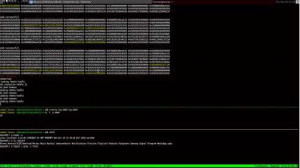Nowadays, Bluetooth is an integral part of mobile devices. Smartphones interconnect with smartwatches and wireless headphones. By default, most devices are configured to accept Bluetooth connections from any
nearby unauthenticated device. Bluetooth packets are processed by the Bluetooth chip (also called a controller), and then passed to the host (Android, Linux, etc.). Both, the firmware on the chip and the host Bluetooth subsystem, are a target for Remote Code Execution (RCE) attacks.
One feature that is available on most classic Bluetooth implementations is answering over Bluetooth pings. Everything an attacker needs to know is the device’s Bluetooth address. Even if the target is not discoverable, it typically accepts connections if it gets addressed. For example, an attacker can run l2ping, which establishes an L2CAP connection and sends echo requests to the remote target.
In the following, we describe a Bluetooth zero-click short-distance RCE exploit against Android 9, which got assigned CVE-2020-0022 . We go through all steps required to establish a remote shell on a Samsung Galaxy S10e, which was working on an up-to-date Android 9 when reporting the issue on November 3 2019. The initial flaw used for this exploit is still present in Android 10, but we utilize an additional bug in Bionic (Android’s libc implementation), which makes exploitation way easier. The bug was finally fixed in the security patch from 1.2.2020 in A-143894715. Here is a demo of the full proof of concept:
Continue reading “CVE-2020-0022 an Android 8.0-9.0 Bluetooth Zero-Click RCE – BlueFrag”
Continue reading